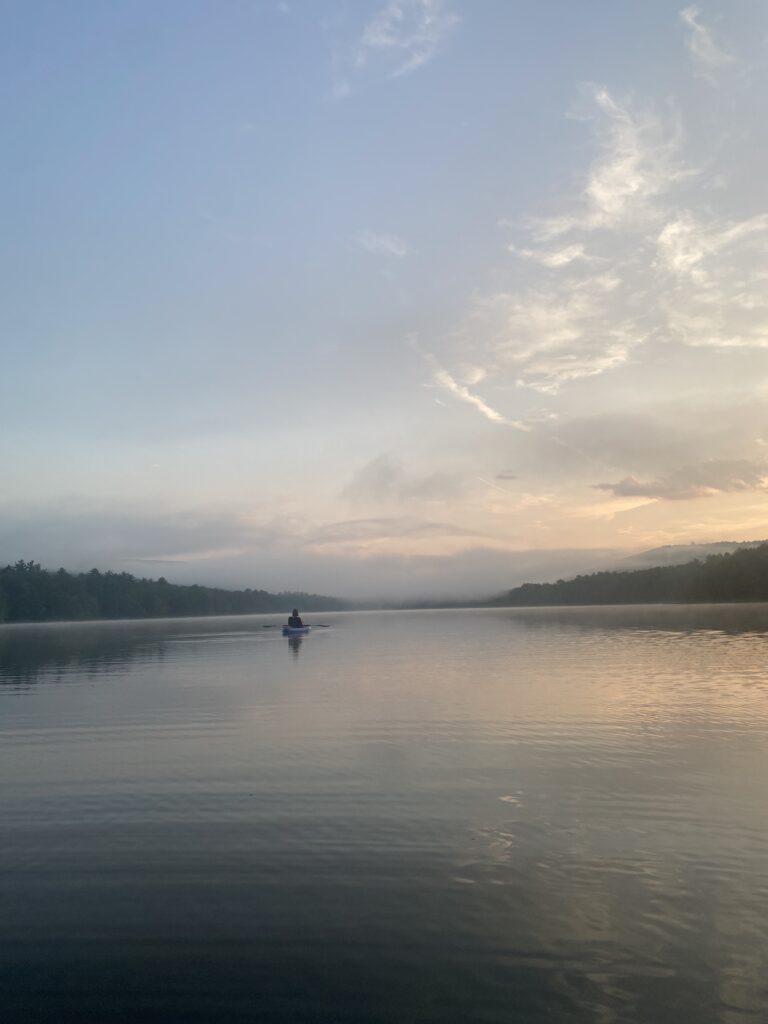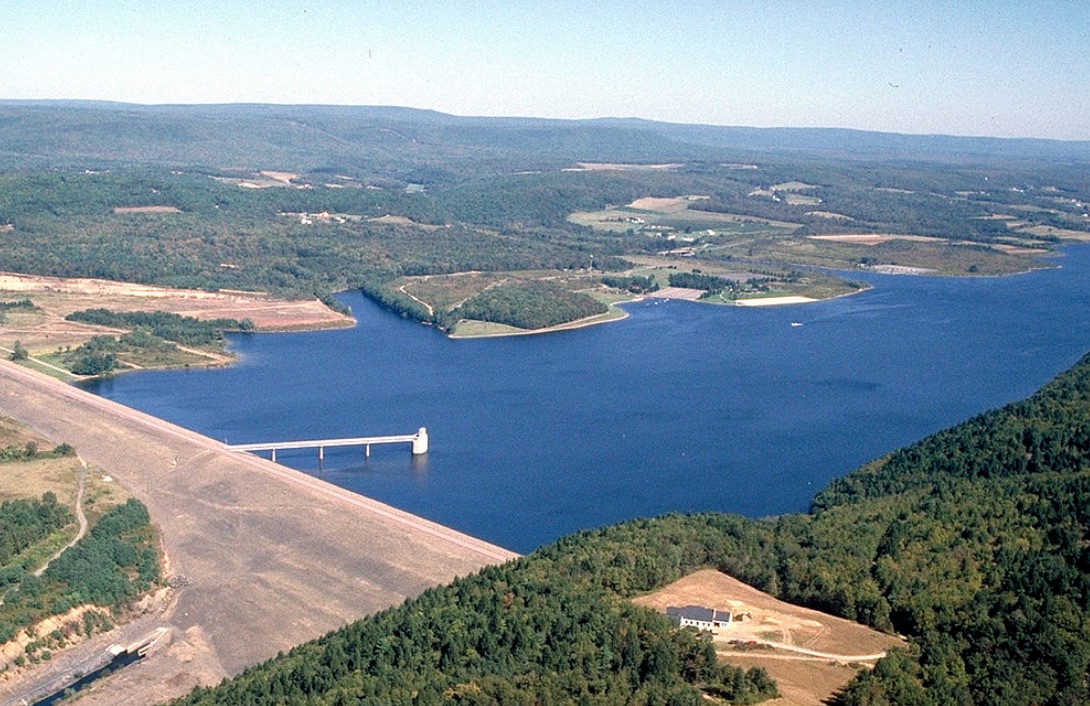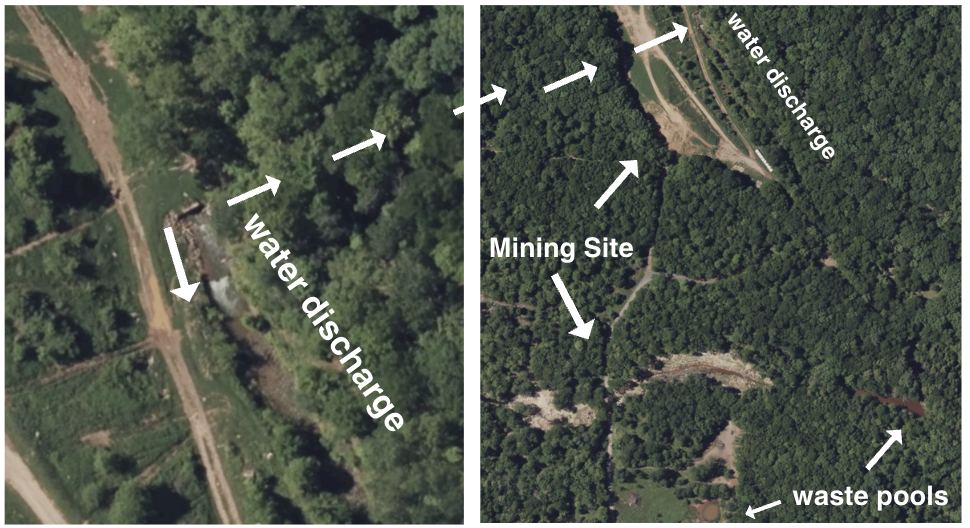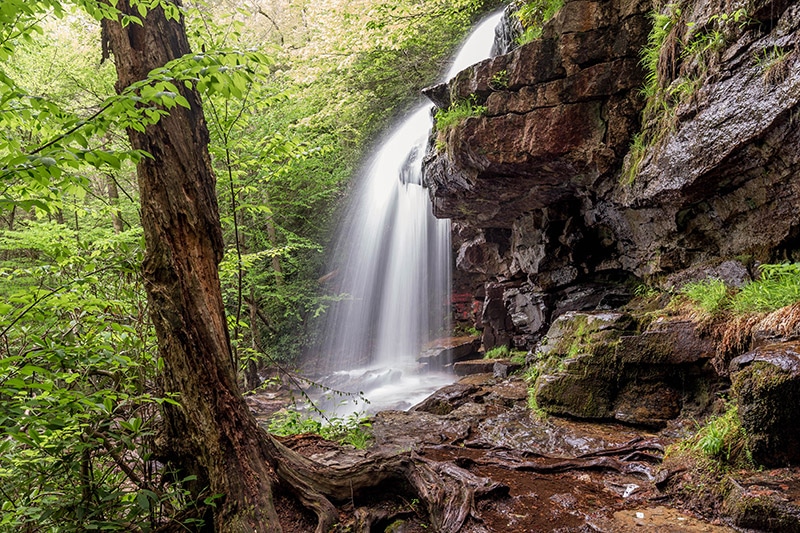Water Resources
Ecosystem services encompass the myriad benefits humans derive from both the biotic and abiotic elements of their surroundings, offering provisioning, regulating, supporting, and cultural advantages. Water, an essential abiotic component in numerous ecosystems, plays a pivotal role in human life, supporting everything from basic survival and hydration to energy generation and the hydrologic cycle.

Carbon County Waterways
In Carbon County, Pennsylvania, a diverse array of water resources serves both recreational and potable needs, with most water bodies recognized for their moderate quality. However, these aquatic systems confront challenges, including point source pollution from sewage treatment facilities and mining operations, alongside non-point source pollution from agricultural activities, vehicular transportation, and road runoff. Addressing these pollutants through the gradual cessation of harmful practices offers a pathway to enhancement. Over time, adopting sustainable methods and concerted efforts can significantly alleviate these environmental challenges, preserving the invaluable services our ecosystems provide.
According to News-Press, Carbon County is home to sixteen dams, which have created an equal number of lakes. Among these, nine serve recreational activities, five are dedicated to supplying drinking water, and two have been established to mitigate flood risks. The report highlights that all drinking water sources are under local government ownership, with a map detailing their locations available for reference.

Water Quality Issues
Drawing on the New York Times‘ “Toxic Waters” series, it’s noted that Carbon County encompasses 30 distinct water systems catering to populations ranging from 35 to 9,300 individuals. This analysis includes data on discharge points within the county, identifying contaminants that have been found at levels above, within, or have been tested for, predating the year 2010. More current data regarding water contamination can be found on the websites of individual boroughs, albeit these sources do not encompass the entire county. Specifically, the 2022 report from the Jim Thorpe Borough Water Authority and the 2021 report from the Lehighton Water Authority both indicate that contamination levels of trihalomethanes—a byproduct of sewage treatment disinfectants—are within the recommended safety thresholds.
The issue of water privatization emerges as a sustainability concern, particularly given the incomplete accessibility to comprehensive county water quality reports. This gap in information raises significant questions regarding the sources of drinking water for all residents and the quality of such water, underscoring the need for transparency and effective management in safeguarding public health and environmental integrity.
Water Pollution
Carbon County’s rich coal resources have historically led to widespread pollution of its waterways, primarily due to runoff from mining, transportation, and the use of anthracite coal. A notable remnant of past mining activities is the Quakake Tunnel, which discharges acid mine drainage into Wetzel Creek, exacerbating water pollution with acidic runoff. This site, visible on Google Maps, highlights the ongoing issues of acid mine drainage and its detrimental effects on water quality, with recent construction efforts failing to fully mitigate the problem. Agriculture also plays a significant role in the region’s environmental challenges. According to a 2017 report by the Pennsylvania Capital-Star, approximately 15% of Carbon County’s land is used for farming, with sweet corn identified as the predominant crop. Despite covering less area than in some other regions, the practice of monocropping sweet corn contributes to soil nutrient depletion, waterway pollution from fertilizers, and supports less sustainable agricultural outputs such as livestock feed, corn syrup production, and ethanol.
Vehicle and mobile equipment runoff is another significant source of water pollution in Carbon County. The reliance on cars by both residents and visitors for transportation within and beyond the county boundaries introduces a variety of non-point source pollutants into the environment. These include emissions from trains, farming and construction machinery, transportation trucks, and recreational vehicles. A critical challenge in addressing these issues is the absence of comprehensive tracking, records, or data on the impact of agricultural practices and vehicle pollution on water quality.
The stakeholders involved in these environmental issues are varied, encompassing local, state, and federal environmental agencies, residents who depend on local water resources and are directly affected by pollution, and businesses, educational institutions, and other entities that rely on the availability and quality of water resources. The collective effort of these stakeholders is crucial in devising and implementing effective strategies to mitigate pollution and safeguard the county’s water quality for future generations.

Sustainable Solutions
Introducing native vegetation such as grasses, wildflowers, and trees along waterways is emerging as a sustainable method to combat water contamination and prevent stream bank erosion. By establishing riparian buffer zones, these plantings not only minimize the impact on land across different zones but also enhance water purification efforts. These buffers prove to be highly beneficial, not just in mitigating environmental degradation but also in supporting pollinator species and promoting biodiversity through their regulatory and supportive services. An illustrative example of successful implementation can be found in Costa Rica. Here, legislation incentivizes private landowners, particularly those in agriculturally intensive regions, to plant and maintain riparian buffers along small tributaries. This initiative has shown positive outcomes in protecting downstream communities by improving water quality and ecosystem health.
However, the adoption of such sustainable practices often encounters challenges, largely rooted in political and bureaucratic hurdles regarding planting policies and funding. There’s also public apprehension towards potential reductions in aesthetic value due to diminished direct water access. Overcoming these barriers requires framing riparian buffer initiatives as a means to achieve sustainability by ensuring equitable access to incentives, especially in areas where they are most critically needed. In the broader context of agriculture and its relation to water use, the application of permaculture principles, drip irrigation, and diversified crop rotations—including legumes and grains—can significantly enhance water and nutrient utilization. This approach helps in reducing runoff while simultaneously increasing agricultural yields. Nonetheless, these sustainable practices frequently face opposition from entities prioritizing livestock production, which is less efficient in terms of carbon dioxide absorption compared to plant-based systems. Efforts to minimize water use in agriculture align with a comprehensive definition of sustainability, emphasizing the maximization of water renewal within planetary limits. This approach advocates for equitable development and human rights, underscored by transparent processes that engage all relevant stakeholders, adopt systems thinking, and consider the intrinsic value of nature in sustainable development strategies.
Preserving, conversing and increasing biodiversity surrounding water resources will allow Carbon County to greater protect its water assets. The Keystone Clean Water Team and Carbon County Groundwater Guardians are water conservation organizations that share information for residents to learn more about their drinking water and well systems. A further list of assets regarding water resources is available through google my maps. Some of these locations could improve sustainability according to our definition by creating riparian buffer zones, diversifying agriculture, and consulting stakeholders.
To enhance and safeguard the water resources of Carbon County, a focused effort on preserving, conserving, and augmenting the biodiversity around these vital ecosystems is crucial. Initiatives such as establishing riparian buffer zones, adopting diversified agricultural practices, and actively engaging with community stakeholders stand as a testament to this approach. Organizations like the Keystone Clean Water Team and the Carbon County Groundwater Guardians are pivotal in these efforts. By disseminating valuable information, they empower residents with knowledge about their drinking water systems and the importance of sound management, fostering a community that values and protects its water sources. Advocating for agricultural diversity can lead to more resilient food systems and reduce the environmental impact of farming practices. Moreover, collaboration with stakeholders—including local residents, farmers, businesses, and environmental organizations—is essential in crafting policies and practices that reflect the collective will and needs of the community. This collaborative approach ensures that sustainability efforts are not only practical but also inclusive, offering a pathway towards a future where water resources are managed wisely and sustainably. By embracing these strategies, Carbon County can protect its precious water assets, ensuring they remain a source of life and prosperity for future generations.
References
n.d. Lehighton Water Authority. Accessed March 25, 2024. https://www.lehightonwater.com/sites/g/files/vyhlif7366/f/uploads/2021_annual_drinking_water_quality_report.pdf.
n.d. Google My Maps. Accessed March 26, 2024. https://www.google.com/maps/d/edit?mid=15IyBApjwiURd4pFNN72kTQTv92fCwFU&ll=40.88397805672844%2C-75.71254995&z=11.
“Carbon County, Pennsylvania Dam Safety Inspection Map.” n.d. News-Press. Accessed March 25, 2024. https://data.news-press.com/dam/pennsylvania/carbon-county/42025/.
“DEPARTMENT OF ENVIRONMENTAL PROTECTION.” n.d. DEPARTMENT OF ENVIRONMENTAL PROTECTION. Accessed March 25, 2024. https://files.dep.state.pa.us/Mining/Abandoned%20Mine%20Reclamation/AbandonedMinePortalFiles/Accomplishments/OSM13_3700_101.1_EMER_Quakake_Tunnel_Subsidence.pdf.
Hess, David E. 2018. “DCNR Invites Public To Nov. 15 Information Session On Beltzville State Park In Carbon County.” PA Environment Digest Blog. https://paenvironmentdaily.blogspot.com/2018/11/dcnr-invites-public-to-nov-15.html.
Miller, Cassie. 2020. “Cropland in the commonwealth: Here’s what’s growing across the state |The Numbers Racket Returns • Pennsylvania Capital-Star.” Pennsylvania Capital-Star. https://penncapital-star.com/government-politics/cropland-in-the-commonwealth-heres-whats-growing-across-the-state-the-numbers-racket-returns/.
Niesenbaum, Richard A. 2020. Sustainable Solutions: Problem Solving for Current and Future Generations. N.p.: Oxford University Press.
“Toxic Waters.” n.d. New ayork Times. Accessed March 25, 2024. https://www.nytimes.com/interactive/projects/toxic-waters/contaminants/pa/carbon/index.html.
“2021 Annual Drinking Water Quality Report | Borough of Jim Thorpe PA.” n.d. Jim Thorpe Borough. Accessed March 25, 2024. https://www.jtborough.org/water/pages/2021-annual-drinking-water-quality-report.
“Well Water Basics for the Homeowner in Carbon County Pennsylvania.” n.d. Carbon County Groundwater Guardians. Accessed March 26, 2024. https://carbonwaters.org/2014/04/well-water-basics-for-the-homeowner-in-carbon-county-pennsylvania/#.U1FGCM2owc4.twitter
